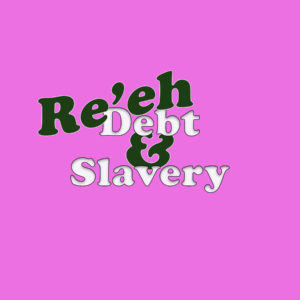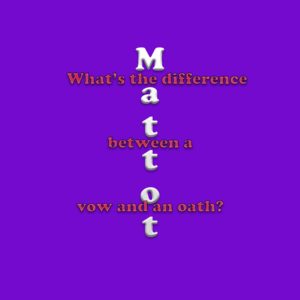Re’eh – Debts and Slavery in Ancient Israel
 Hey! Sorry for taking such a long break but things got crazy around here! We started our twins’ sophomore year and my husband was blessed with a great new job in our favorite place in the USA (okay, okay I mean besides Disneyland and Disneyworld!). So we are overhauling the house and getting ready to move back to Idaho after twelve years of moving around the US. We are incredibly happy and excited. Our kiddos were born when we were in Idaho, so they are native sons returning to the land of potatoes and salmon.
Hey! Sorry for taking such a long break but things got crazy around here! We started our twins’ sophomore year and my husband was blessed with a great new job in our favorite place in the USA (okay, okay I mean besides Disneyland and Disneyworld!). So we are overhauling the house and getting ready to move back to Idaho after twelve years of moving around the US. We are incredibly happy and excited. Our kiddos were born when we were in Idaho, so they are native sons returning to the land of potatoes and salmon.
I also, with the help of my editor Sarah Hawkes Valente and my formatter  David Farley, have the next volume of Context for Kids at the publisher. This week it should be available just in time for the new school year. Volume one was suitable for kids as young as seven, but volume two is slated for ten and up – it is more complicated but still very doable. A lot of history in this one, as well as archaeology and I hope a lot of inspiration for your kids to be lifelong Bible scholars!
David Farley, have the next volume of Context for Kids at the publisher. This week it should be available just in time for the new school year. Volume one was suitable for kids as young as seven, but volume two is slated for ten and up – it is more complicated but still very doable. A lot of history in this one, as well as archaeology and I hope a lot of inspiration for your kids to be lifelong Bible scholars!
So this week’s Torah portion covers one of those awkward and sticky biblical situations – SLAVERY. We all immediately think of the horrors of Roots (and I strongly recommend that all kids see it once they are old enough) but Biblical slavery is entirely different. American slavery, as well as the slavery practiced in the world today, is Biblically indefensible – even though the Bible was used to defend it (let’s face it, the Bible is used out of context to justify a lot of evil in this world). Quakers and other Christians and Jews, used the Bible to fight slavery, in fact. So, I hope this lesson on Israelite debt-slavery helps the kids understand more about how God cares for His people.
Quick addition here – my teacher Joseph Good, an expert in the Temple in Jerusalem, taught me this fun prayer this morning that many Jews pray when they see a rainbow and I copied and pasted it from a site called chabad.org. I like it because it makes reference to the covenant, only wish I had learned this BEFORE sending my new book to the publisher, it would have been a great addition.
After the flood, G‑d promised Noah that He would never again bring a flood that would destroy the world. A rainbow is a reminder of this covenant that G‑d made with Noah, his descendants, and all living creatures. Therefore, upon seeing a rainbow in the sky, we recite the following blessing:
בָּרוּךְ אַתָּה ה’ אֶלוֹהֵינוּ מֶלֶךְ הָעוֹלָם זוֹכֵר הַבְּרִית וְנֶאֱמָן בִּבְרִיתוֹ וְקַיָם בְּמַאֲמָרוֹ
Baruch ata Ado-nai Elo-heinu melech ha’olam zocher ha’brit v’ne’eman bivrito v’kayam b’ma’amaro.
Blessed are You, Lord our G‑d, King of the universe, who remembers the covenant, and is faithful to His covenant, and keeps His promise.
